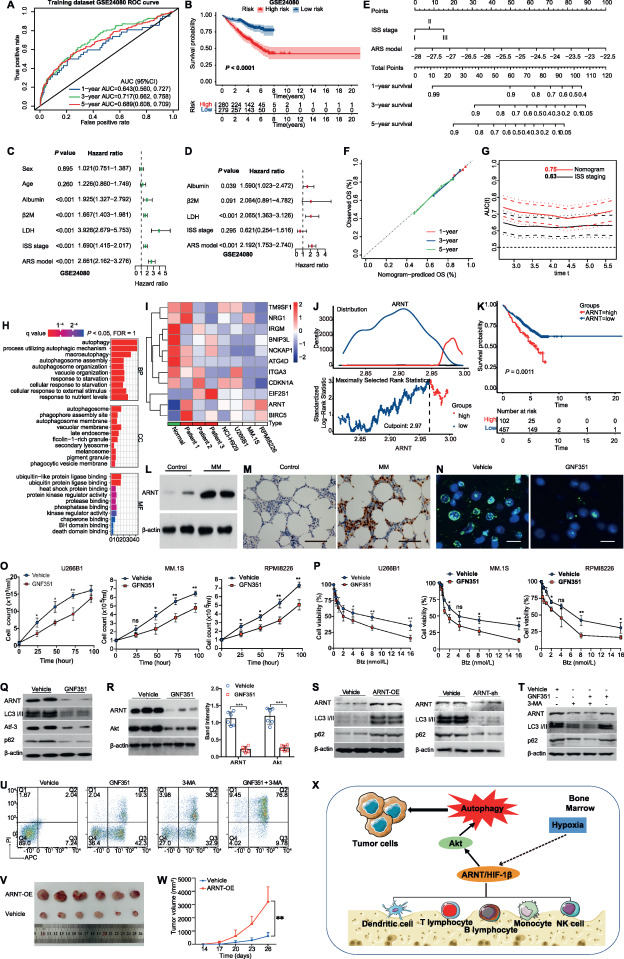
A new autophagy-related nomogram and mechanism in multiple myeloma


Multiple myeloma (MM) is the second most common hematological tumor. It is characterized by high drug resistance, easy recurrence, and poor prognosis, and remains incurable. Various models or scoring modalities can be used to predict the survival prognosis of MM patients; however, these predictions are still not accurate enough. We have previously found that scorings related to bone marrow microenvironment metabolism can improve predictive efficacy.1 Given the importance of autophagy as a stress-induced self-degradation process critical for cell survival, particularly in the hypoxic bone marrow microenvironment of MM, autophagy-related genes are considered crucial.2 We constructed an Autophagy Risk Score (ARS) model using 11 survival-associated autophagy-related genes (ARGs). Multivariate analysis showed that ARS was an independent predictor of survival. Most importantly, the combination of an international staging system (ISS) and the ARS model into a new nomogram model can improve the accuracy of MM survival prediction. Additionally, targeting the autophagic gene ARNT could potentially overcome drug resistance to bortezomib in the bone marrow microenvironment of MM. The workflow is presented in Figure S1A. The study was approved by the Ethics Committee of Sun Yat-sen University Cancer Center.
